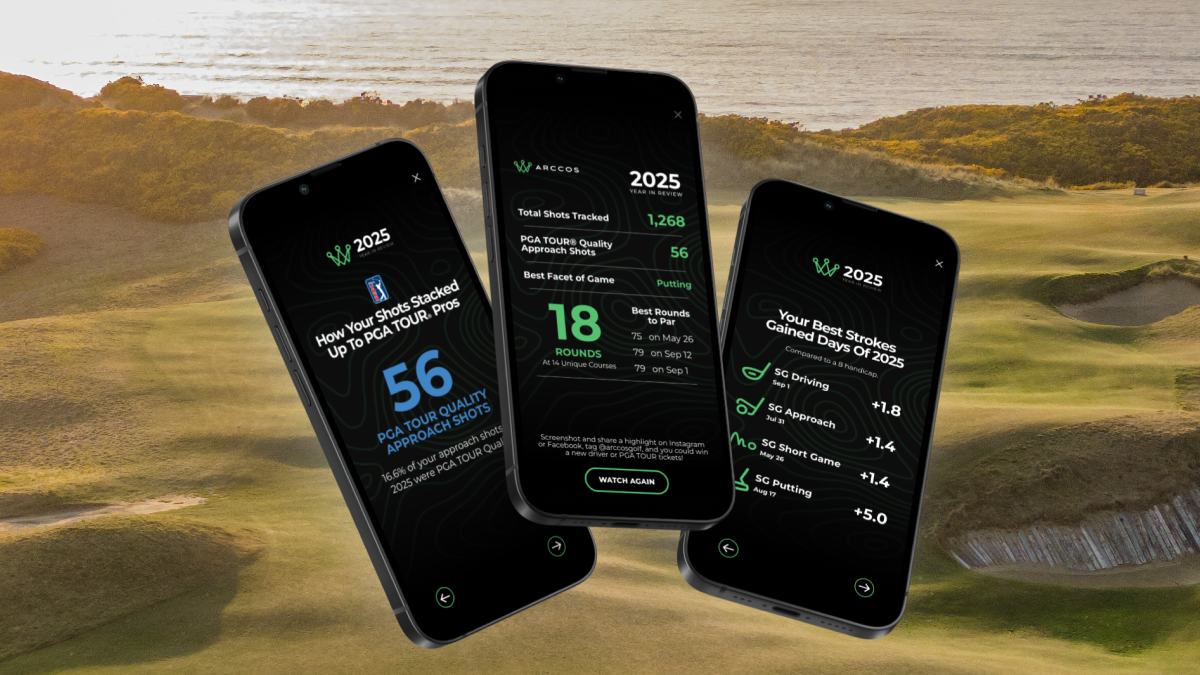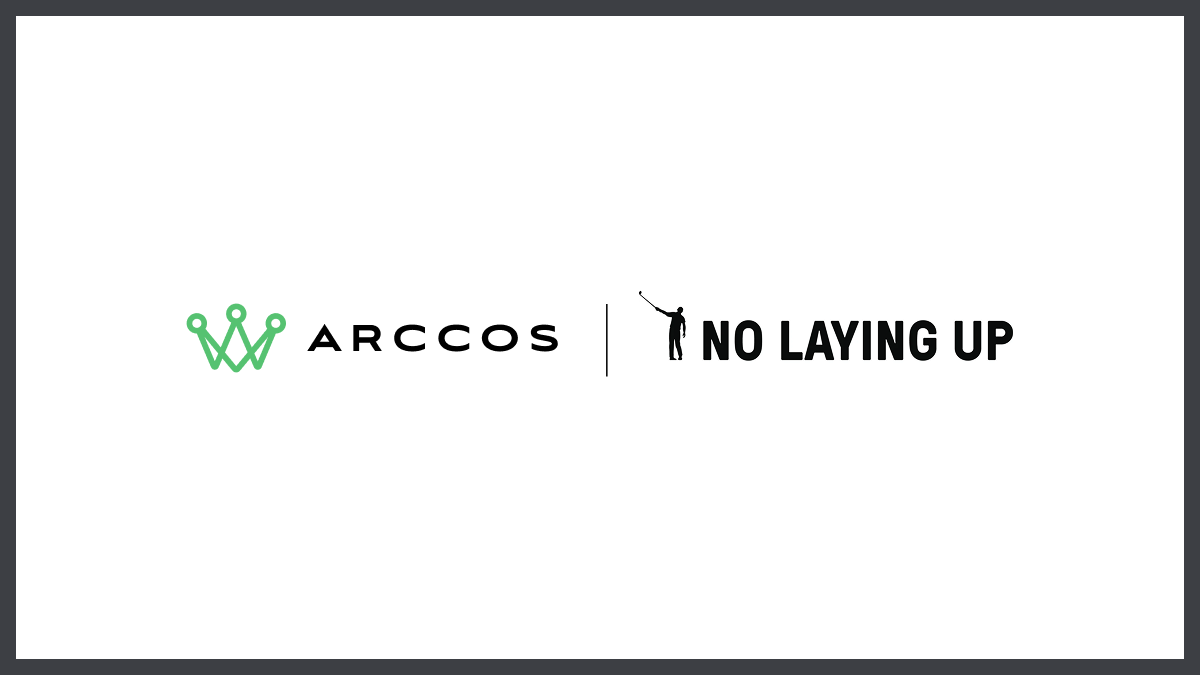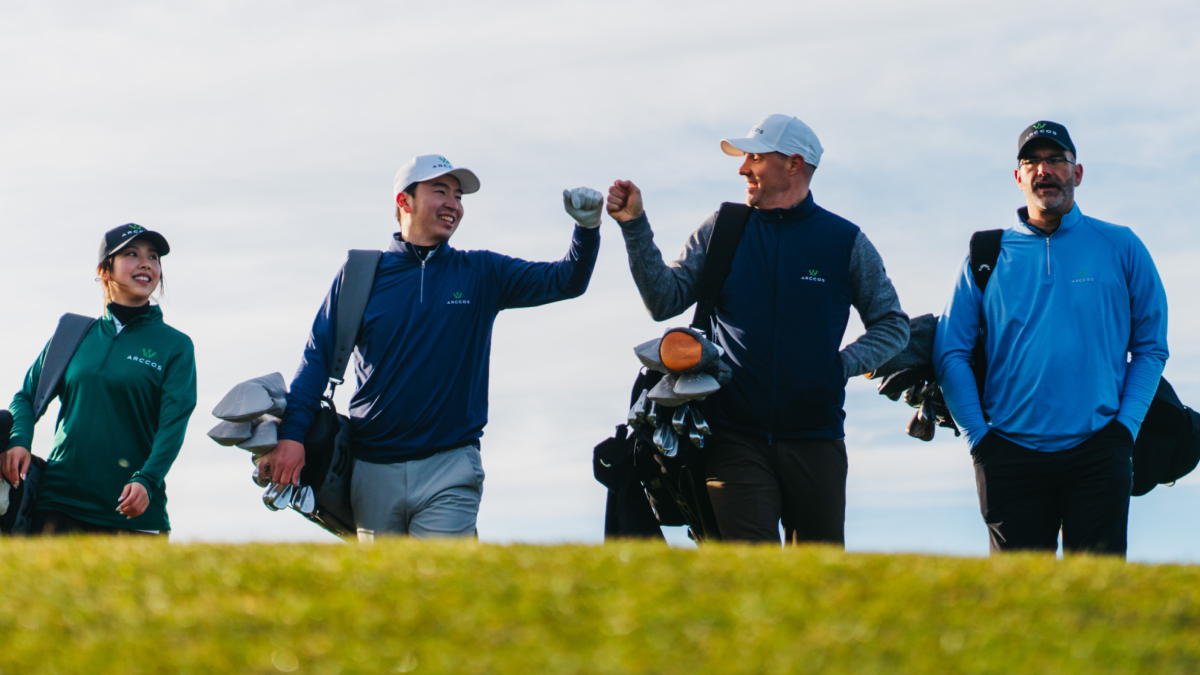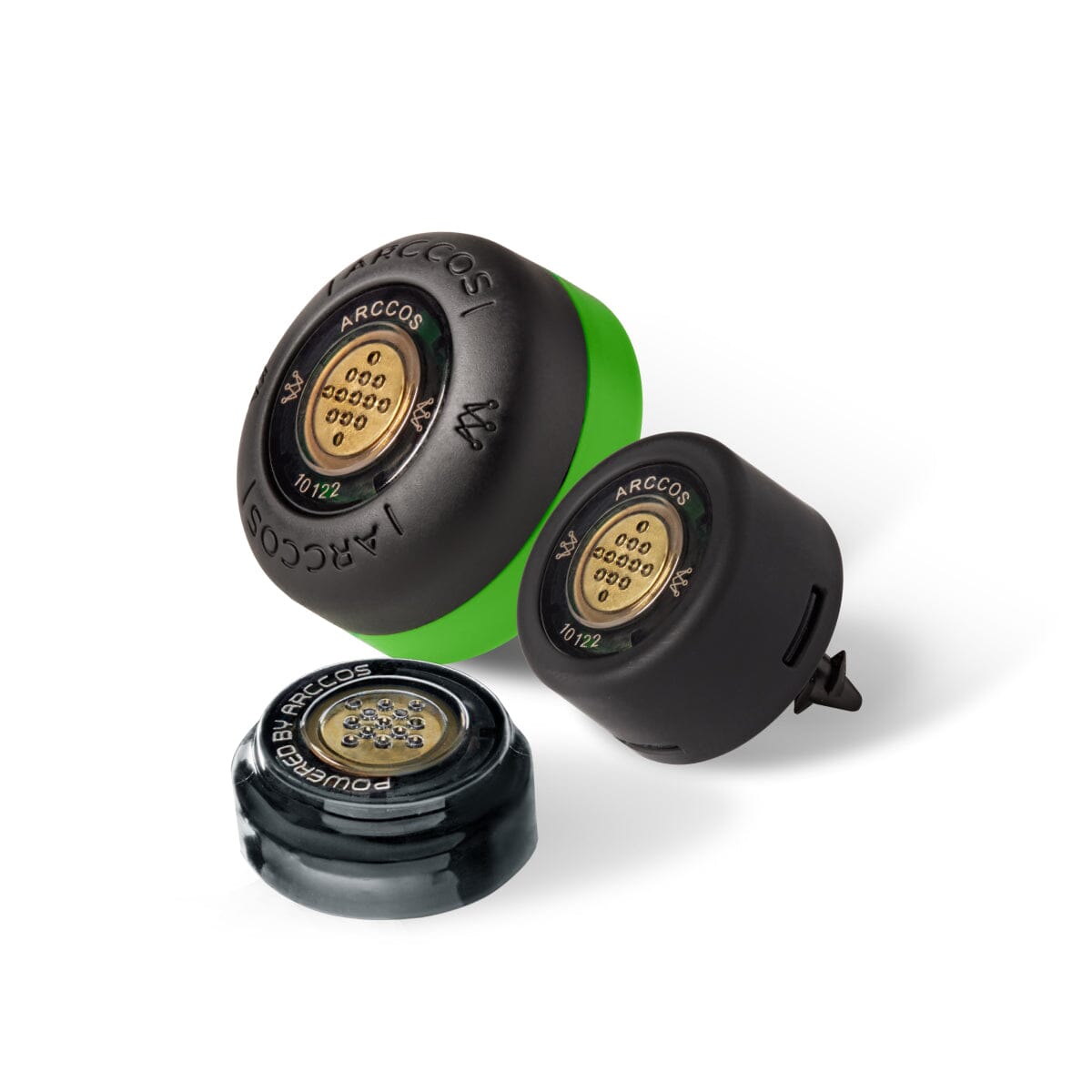These are all questions without answers – until Arccos.
Since releasing its first shot-tracking system in 2014, Arccos has become the leader in on-course data capture for amateurs. What used to be guesswork can now be quantified by the immense amount of data accumulated in its system.
So where does that data come from? Using sensors installed in the grip of your club, Arccos has tracked more than 70 million shots (and counting) during more than three-quarters of a million rounds on golf courses in more than 115 countries. These shots have been taken by players ranging from middle-schoolers to grandpas, from scratch players to beginners. The platform knows what club you’re hitting, where you’re hitting it from and how far it travels. It has also captured more than 8.1 billion time-stamped geotagged data points on golfer behavior and 368 million GPS course mapping data points.
Leveraging that incredible data set – without question the richest in golf – we’re able to take deep-dives to deliver previously inaccessible insights. To kick off this series, we’re taking a closer look at what golfers can expect from their game as they grow older.
Let’s begin with a simple truth: No one is going to age like Bernhard Langer. The 59-year-old German won his first pro title in 1980 and is still earning major championship victories on the Champions Tour.
So, what should you expect as you age? What changes will you see on the course – for good or bad?
- You’re going to lose distance – No surprise there. Every 10 years after you hit age 30, your 7-iron will lose about four yards.
- You’re going to hit more fairways – There’s a clear correlation between age and accuracy off the tee.
- Your skills evolve – Approach shots begin to save you more strokes, and your putter will win you more matches – until you hit 60. The numbers predictably show the 60+ age bracket experiencing the most severe drop-offs across the board.
- You’ll play a lot more often – What we all hopefully can look forward to is more leisure time, especially after age 60.
Ready to look into the future?
DRIVING STATS
One of Arccos’ core tenets is identifying the “true average” distance for a well-hit shot with each club in your bag. Dubbed “Smart Distance” this proprietary algorithm removes outliers from the calculation – be they abnormally short (flubs or punch shots) or long (downhill/downwind or cart path bounce).
Arccos data shows the longest hitters off the tee fall in the 21-30 age bracket, with an average Smart Distance of 258 yards with their driver. Two decades later, that Smart Distance is down to 244 yards.
All hope isn’t lost for the older players, however. Players in the 60+ age bracket may hit it 43 yards shorter than their 21-30 year-old counterparts, but they average 49% fairways hit. That’s 10% higher than 21-30 year olds.
Another way to look at driving performance is through Arccos Tour Analytics, which uses an enhanced version of the Strokes Gained model to break down a player’s handicap into five facets – driving, approach, chipping, sand and putting. This analyzes every shot you take and determines whether you got more or less from that shot than you should have. After the round, Arccos takes all of the data and benchmarks your performance against how players of different skill levels typically perform and generates a handicap level for each of the five aspects of your game.
The top driving handicap is in the 21-30 bracket with a 13.2 average. The next best group is the 11-20 bracket with a 13.5 driving handicap.
7-IRON SMART DISTANCE
Focusing on 7-irons, the 21-30 bracket’s Smart Distance is 164 yards. Again, it’s not news that you’ll likely lose distance as you age, but we can zero in on precisely how many yards players can expect to lose in each age range.
On average, each bracket loses four yards, with those who are 60+ have a 140-yard Smart Distance with their 7-iron.
Even though the older age brackets are hitting it shorter, their approach shot handicaps are actually improving. The best approach shot handicap falls in the 11-20 bracket, at 13.0. The next best is the 51-60 bracket, coming in at 13.8. Coincidentally, both age groups have similar 7-iron Smart Distances, at 152 and 151 yards.
PUTTING HANDICAP
On the greens, the youngest Arccos users perform best with the flatstick. With a putting handicap average of 10.1, the 11-20 age group has the lowest figure by far. That figure takes a big leap into the 21-30 bracket. Are teenagers less susceptible to nerves on the putting green? Could their putting stats take a dip as they strive for more distance in their 20s? Those are areas about which there will no doubt be debate, and we’re excited to continue analyzing the data and exploring insights from other sources.
ANNUAL ROUNDS PLAYED
Even though your distance will tail off, there is major bright side as you age: you’re going to play a lot more golf. The average annual round count for an Arccos user jumps from 19 in the 21-30 bracket all the way to 33 for the 60+ bracket.
So, while getting older isn’t necessarily fun, you now at least know what’s coming as far as your golf game.






Share:
Q&A: Arccos Ambassador Talor Gooch On His First U.S. Open and Seeing His Name Atop the Leaderboard at Erin Hills
The 6 Best Quotes From Golf Digest's Story on Big Data, Arccos Caddie and the Future of Golf